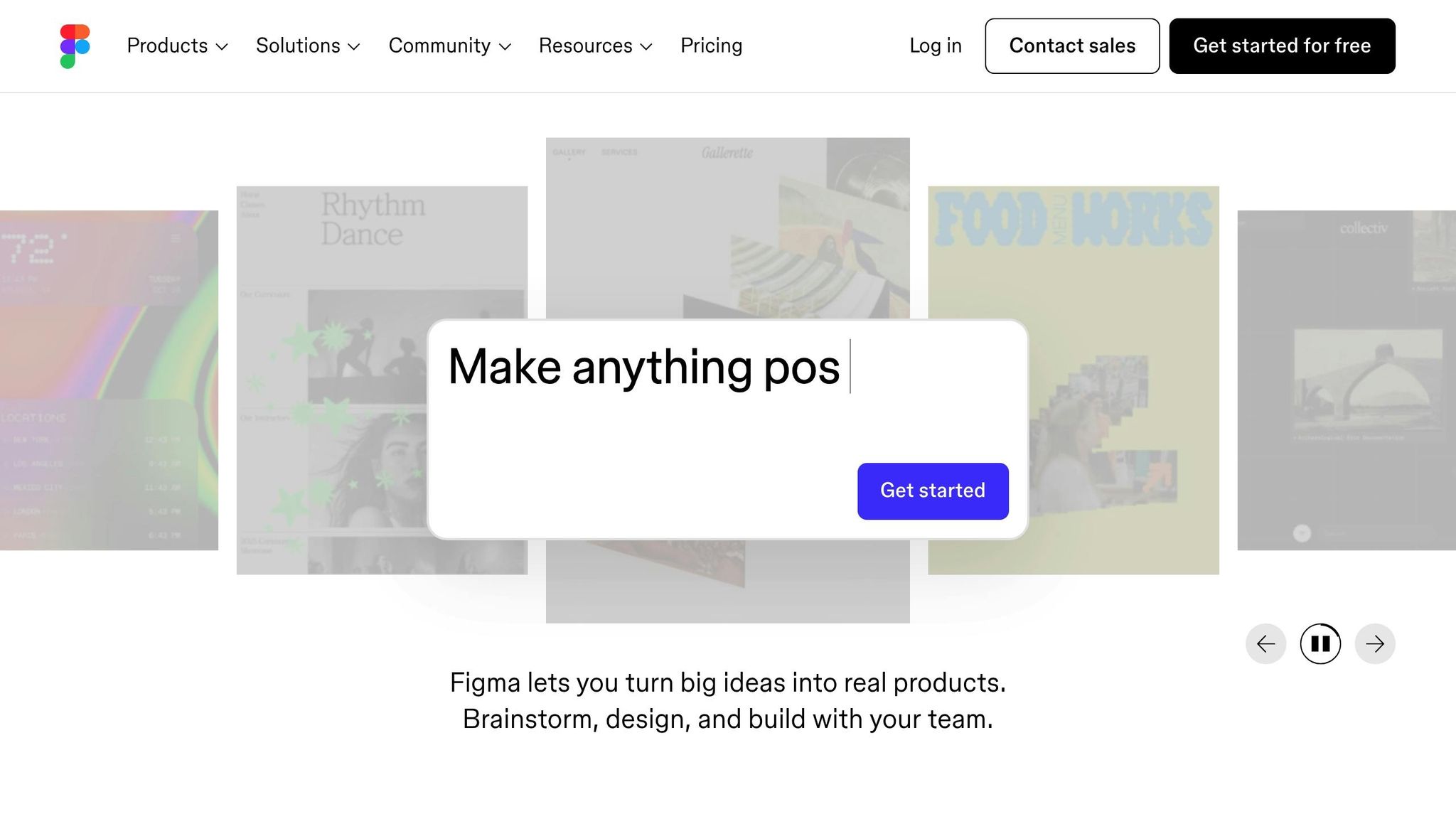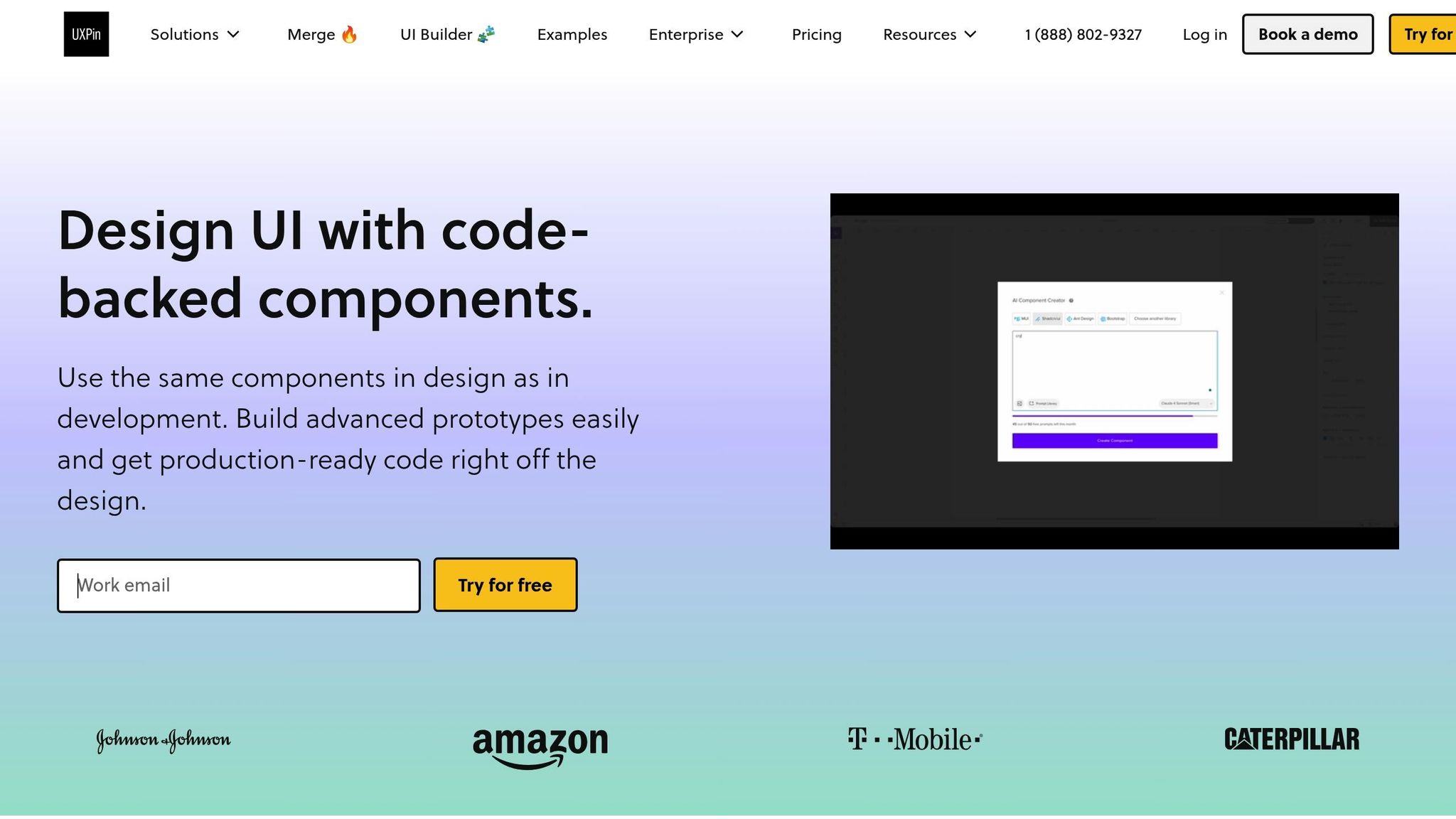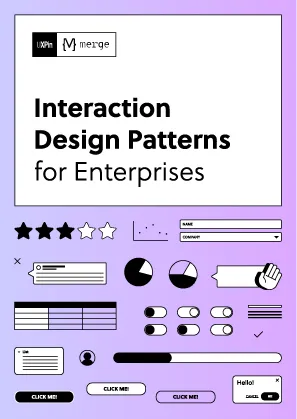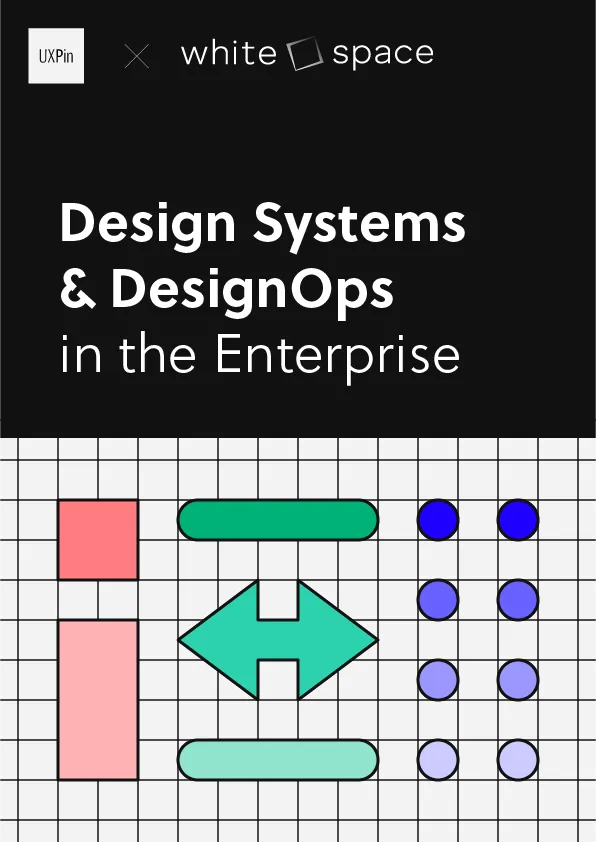The design-to-development handoff is a critical stage in product creation. If done poorly, it can lead to errors, inconsistencies, and delays, directly impacting user experience. Effective handoff tools and practices ensure developers receive clear, detailed design intent, reducing miscommunication and rework. Key takeaways:
- What is the handoff? It’s the process of transferring design assets, specs, and rationale from designers to developers.
- Why it matters: Poor handoffs can result in issues like inconsistent spacing, missing interaction states, and extra revisions, harming UX.
- Solutions: Modern handoff tools use interactive prototypes, code-backed components, and design systems to align teams and improve efficiency.
- Results: Teams save time, cut errors, and deliver products faster while maintaining design integrity.
Better tools and collaboration during handoff bridge the gap between design and development, ensuring a smoother workflow and higher-quality outcomes.
Design to Developer Handoff in Figma – Full Tutorial

Core Elements of Effective Handoff Processes
Getting handoff processes right means more than just sharing files – it’s about ensuring the design intent is crystal clear and carried through to development without losing quality. This involves precise communication, detailed specifications, and close collaboration between teams, setting the groundwork for a seamless transition from design to implementation.
Clear Specifications and Interactive Prototypes
Interactive prototypes are the backbone of effective handoffs. They don’t just show how an interface looks – they demonstrate how it behaves. These prototypes respond to user actions, adapt to different scenarios, and provide developers with a clear understanding of the intended functionality. When paired with production-ready, code-backed components, prototypes eliminate guesswork, ensuring the final product aligns perfectly with the original design.
These prototypes go beyond static visuals by showcasing intricate details like micro-animations, state changes, and responsive behaviors. Developers can see exactly how the design should function, leaving no room for misinterpretation. Alongside these prototypes, detailed specifications – such as measurements, color codes, typography details, and interaction states – should be provided. Automating this process through code-backed components reduces errors and ensures consistency across the project.
Team Reviews and Regular Communication
Frequent team reviews and open communication are essential for catching potential issues early and keeping everyone on the same page. Regular meetings and feedback sessions help teams address concerns as they come up, avoiding costly misunderstandings or last-minute surprises. This is particularly critical in complex or fast-moving projects.
When designers and developers collaborate closely, they gain a mutual understanding of design decisions and technical constraints. Bringing developers into the design process early helps avoid creating features that are difficult – or even impossible – to implement. This shared approach fosters a stronger partnership, improving the overall quality of the project. Over time, these practices naturally lead teams to adopt standardized design systems, which further streamline workflows and enhance collaboration.
Using Design Systems in Handoff
Design systems are a game-changer for handoff processes. They provide reusable components, clear guidelines, and thorough documentation, making it easier to create consistent and scalable products. Studies show that incorporating design systems – especially in Agile environments – can help solve communication and workflow challenges during handoff.
"As a full stack design team, UXPin Merge is our primary tool when designing user experiences. We have fully integrated our custom-built React Design System and can design with our coded components. It has increased our productivity, quality, and consistency, streamlining our testing of layouts and the developer handoff process."
When both designers and developers rely on the same code-backed components, discrepancies between design files and the final product are nearly eliminated. This shared foundation ensures that the user interface looks and functions as intended, reducing inconsistencies and improving the overall user experience.
The benefits of design systems don’t stop there. Teams often see faster development cycles, fewer back-and-forth revisions, and more time to focus on solving user problems. By aligning everyone on a single source of truth, design systems make handoffs smoother and more efficient, helping teams deliver high-quality products with less friction.
Research Shows Benefits of Handoff Tools
Using effective handoff tools can significantly cut down on errors, speed up development, and ensure that design and development teams stay on the same page. Let’s break down the main advantages of adopting these practices.
Fewer Errors and Less Rework
Research highlights that breakdowns during handoffs are a major source of UX problems. Issues like inconsistent spacing, missing interaction states, or poorly organized assets can pile up, harming the user experience and delaying product launches.
By leveraging code-backed components, teams ensure that everyone is working with the same foundational elements. This approach reduces miscommunication and minimizes the need for revisions.
For developers, this means less time spent trying to interpret design files and more time focused on actual coding. The result? Fewer errors and a smoother workflow.
Faster Development Timelines
When errors decrease, the pace of development naturally accelerates. Clear design specifications and interactive prototypes allow developers to dive straight into implementation without waiting for clarification. This streamlined process cuts down on delays caused by back-and-forth communication or revisions.
Mark Figueiredo, Senior UX Team Lead at T. Rowe Price, shared the impact of these tools:
"What used to take days to gather feedback now takes hours. Add in the time we’ve saved from not emailing back-and-forth and manually redlining, and we’ve probably shaved months off timelines."
– Mark Figueiredo, Sr. UX Team Lead at T. Rowe Price
For large-scale enterprise projects with multiple stakeholders, these time savings add up, creating noticeable efficiency improvements.
Better Alignment Between Design and Development
Handoff tools serve as a bridge between design and development, ensuring that the final product stays true to the designer’s vision. When teams rely on code-backed components and shared design systems, everyone benefits from a unified understanding of how layouts should behave across various devices and screen sizes.
David Snodgrass, a design leader, emphasized this point:
"The deeper interactions, the removal of artboard clutter creates a better focus on interaction rather than single screen visual interaction, a real and true UX platform that also eliminates so many handoff headaches."
– David Snodgrass, Design Leader
This shared framework not only enhances collaboration but also ensures a cohesive product experience. By aligning design and development workflows, teams can deliver a polished end product that resonates with users.
sbb-itb-f6354c6
How UXPin Improves Handoff and UX Quality

UXPin tackles the common hurdles of design handoff by bridging the gap between designers and developers. By integrating shared, code-backed components, it moves beyond static mockups and allows teams to create functional prototypes that mimic the final product. This approach not only simplifies collaboration but also enhances the overall quality of user experiences.
Better Handoff with Code-Backed Prototypes
One of the biggest challenges in traditional handoff processes is maintaining design intent. UXPin solves this by leveraging code-backed prototypes that go beyond mere visuals. Designers work directly with real React components, ensuring that the prototypes are accurate representations of the final product.
The impact of this approach is evident. For example, one team using UXPin Merge reduced their design-to-code translation time from 6 weeks to just 3–5 days. Here’s a quick comparison of workflows:
| Traditional Handoff | UXPin Handoff |
|---|---|
| Designer: 8 hours creating Figma screens | Designer: 2 hours building working prototype |
| Developer: 16 hours implementing front-end screens | Developer: 2 hours connecting to backend |
| 20+ Slack messages clarifying design intent | 1 PR review with code diff |
| 3–5 rounds of QA/revision | Ship the prototype with minor tweaks |
| 6 weeks design to deploy | 3–5 days idea to production |
Source:
By replacing static mockups with dynamic, code-backed prototypes, teams can streamline workflows and significantly reduce the time spent on revisions and clarifications.
AI-Powered Design and Reusable Components
UXPin also introduces tools that ensure consistency and scalability. With the AI Component Creator, designers can generate code-backed layouts – like tables, forms, and complex UI elements – using AI-powered prompts from OpenAI or Claude models. These components are ready for immediate use, ensuring consistency across the product.
The platform supports built-in coded libraries such as MUI, Tailwind UI, and Ant Design, and teams can even sync their own Git component repositories. This means designers and developers work with the same set of building blocks, treating code as the single source of truth.
Brian Demchak, Senior UX Designer at AAA Digital & Creative Services, highlights the benefits:
"As a full stack design team, UXPin Merge is our primary tool when designing user experiences. We have fully integrated our custom-built React Design System and can design with our coded components. It has increased our productivity, quality, and consistency, streamlining our testing of layouts and the developer handoff process."
Instead of developers having to recreate components from scratch, they can focus on functionality and backend integration, saving valuable time and effort.
Real-Time Collaboration and Design-to-Code Integration
UXPin transforms the traditional handoff process into a seamless, ongoing collaboration. Designers can provide production-ready React code complete with dependencies, which developers can export directly to environments like StackBlitz.
This tight integration eliminates common friction points, such as version control issues or outdated specifications. Any updates made by designers automatically refresh the developer’s specifications, ensuring everyone stays on the same page. By aligning design and development in real time, teams can cut development timelines from weeks to just days.
With UXPin, the handoff process becomes more than just a transfer of files – it’s a collaborative effort that drives efficiency and improves the final product.
Best Practices for Using Handoff Tools to Improve UX Quality
Handoff tools can significantly enhance collaboration between design and development teams, leading to better user experiences and increased efficiency. But to fully leverage these tools, teams need to adopt strategies that ensure smooth workflows and open communication.
Key Points for Better Handoff Processes
One of the most effective ways to streamline the handoff process is by using code-backed components as the single source of truth. When designers and developers rely on the same components, inconsistencies vanish, and communication improves. In fact, teams using code-backed prototypes report cutting engineering time by 50% and reducing feedback loops from days to just hours.
Another critical practice is involving developers early in the design process. Waiting until designs are finalized can lead to costly revisions. Instead, developers should join design reviews to identify potential implementation issues before they escalate. Regular collaboration and review sessions ensure that problems are addressed early, saving time and resources.
Clear documentation also plays a crucial role. A successful handoff goes beyond sharing static files – it requires detailed explanations of design intent, interaction behaviors, and user flows. The most effective teams treat handoff as an ongoing dialogue rather than a one-time transfer of files.
Reusable components can further speed up the process. Whether teams use libraries like MUI and Tailwind UI or custom-built repositories, consistent component libraries boost both speed and quality. This approach not only streamlines current projects but also sets the foundation for more efficient workflows in the future.
How Handoff Tools Will Shape Future UX Workflows
Looking ahead, handoff processes are evolving rapidly. Experts predict a shift toward a "No Handoff" methodology, where designers create production-ready prototypes that developers can build on directly. AI-powered tools are already making this a reality, with features like automated component generation from simple text prompts.
Modern handoff tools are also becoming smarter, offering real-time collaboration features that keep design and development in sync. Updates made by designers automatically refresh developer specifications, eliminating the version control chaos that often disrupts traditional workflows.
Industry leaders are already seeing the benefits of integrating design and development workflows. This approach not only shortens delivery times but also ensures consistency across projects. More importantly, it’s changing the way teams think about the design-to-development process.
The growing adoption of code-backed design tools reflects a shift from treating design and development as separate stages to viewing them as an integrated workflow. When teams embrace these advanced practices, they can deliver better user experiences faster and at a lower cost. Those who make this transition aren’t just improving incrementally – they’re redefining how they work together to create exceptional products.
FAQs
How do interactive prototypes improve the handoff between design and development?
Interactive prototypes serve as a crucial link between design and development, offering a tangible, working model of the final product. They showcase real interactions, behaviors, and user flows, helping to clear up any potential misunderstandings and keeping everyone on the same page.
When teams utilize code-based prototypes, they can cut down on inconsistencies, improve collaboration, and accelerate the transition from design to development. This method ensures developers receive clear, actionable deliverables that are ready to be built.
How do design systems enhance the efficiency and quality of UX handoffs?
Design systems are essential for streamlining the collaboration between designers and developers, acting as a common language that bridges the gap between these roles. They serve as a centralized hub containing reusable components, detailed design guidelines, and documentation, which helps cut down on miscommunication and inconsistencies during development.
By standardizing elements such as typography, color palettes, and UI components, design systems ensure that teams can maintain both visual and functional consistency across projects. This approach not only saves time but also strengthens teamwork and delivers a more polished user experience.
Why is it important to involve developers early in the design process?
Involving developers early during the design phase leads to stronger collaboration and helps avoid expensive changes later. Developers bring in technical expertise that ensures designs are practical, scalable, and fit within project limitations.
When teams collaborate from the beginning, they can spot issues early, simplify processes, and make the handoff from design to development much smoother. This forward-thinking strategy not only conserves time and resources but also enhances the overall user experience.

